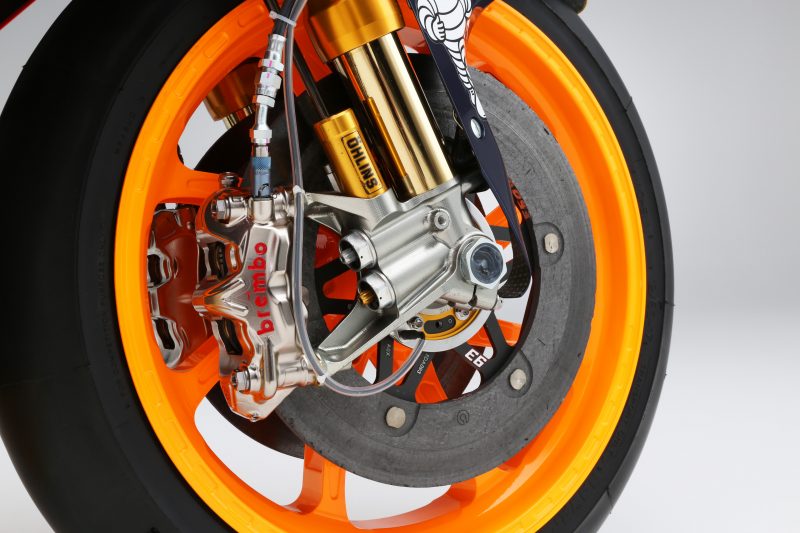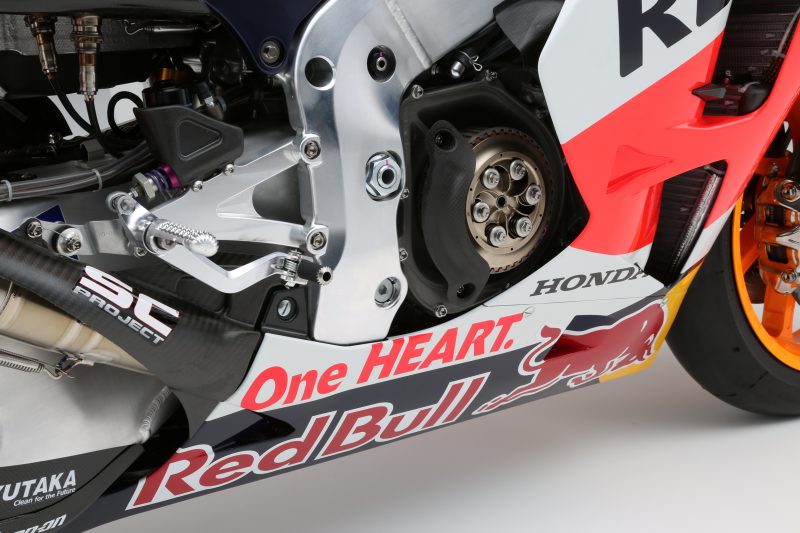A MotoGP team has to carry out routine check ups after every session, Do you think you’d be up to it?
Wheels
As we can see at any MotoGP weekend, wheel changes are constant, even during the same session. Competition tyres are designed for maximum performance, which means their service life is very short—it’s very rare for the rubber to last for more than one race. Your standard street motorbike, on the other hand, has to find a happy medium between durability and efficiency. These tyres can last for over 10 000 km, and it’s advisable to check them at least once a month.

Brakes
Although a set of discs can be used from one session to the next, it’s unusual for them to last an entire weekend. The fluid is replaced and the brakes are bled between sessions. As for your bike, they should have a service life of about 15 000 km. It is advisable to replace the fluid and bleed the brakes every two years.
Suspension
In MotoGP, the suspension components may be changed several times in one weekend due to the wide range of modifications and adjustments they’re subjected to. As for the vehicles we use in everyday life, beyond the basic adjustments, we should be sure to change the seals and oil approximately every 30 000 km and have the suspension looked at every time we take them in for a check up.
Coolant
The Repsol Honda pit crew always visually inspects the components after every session and changes the coolant at the end of the day. The cooling system of standard street bikes should be inspected during every check up and the fluid should be replaced every three years.
Lubricant
It’s very important to check the lubricant levels between each MotoGP session. The pit crew either adds lubricant as needed or replaces it entirely, depending on the demands of the GP race. In our bike, the oil and filter should be changed in every check up, although the oil level needs to be checked at least once a month. The properties of the lubricant should guarantee the engine’s durability and, in this case, save on fuel. You can find more information by clicking here.

Clutch
During a GP weekend, this important element is checked repeatedly and its parts are changed as needed after an exhaustive check up. Depending on the use we give to our two-wheeled friend, we can use the same clutch for 30 000 km, always including it in our regular check up.
Spark plugs
Spark plugs have great durability, and need to be checked every 24 000 km and replaced every 48 000 km—every four check ups. Not surprisingly, in the Box the spark plugs used in high-level competition need to be inspected after every session and changed if necessary.

Chain and drive
The chain needs to be greased and adjusted after every session in MotoGP, and the drive is also inspected and replaced if necessary. As for our street bike, this is also an element which needs to be checked frequently. Every 1000 km we have to check the slack and grease the chain, whilst looking over the wear of the drive.
If you think that checking all the parts of your motorbike is a painstaking task, imagine what it must be like for a MotoGP team having to carry out routine check ups after almost every session, which is barely 100 km. Do you think you’d be up to it?


 Join Us
Join Us  Join Us
Join Us 